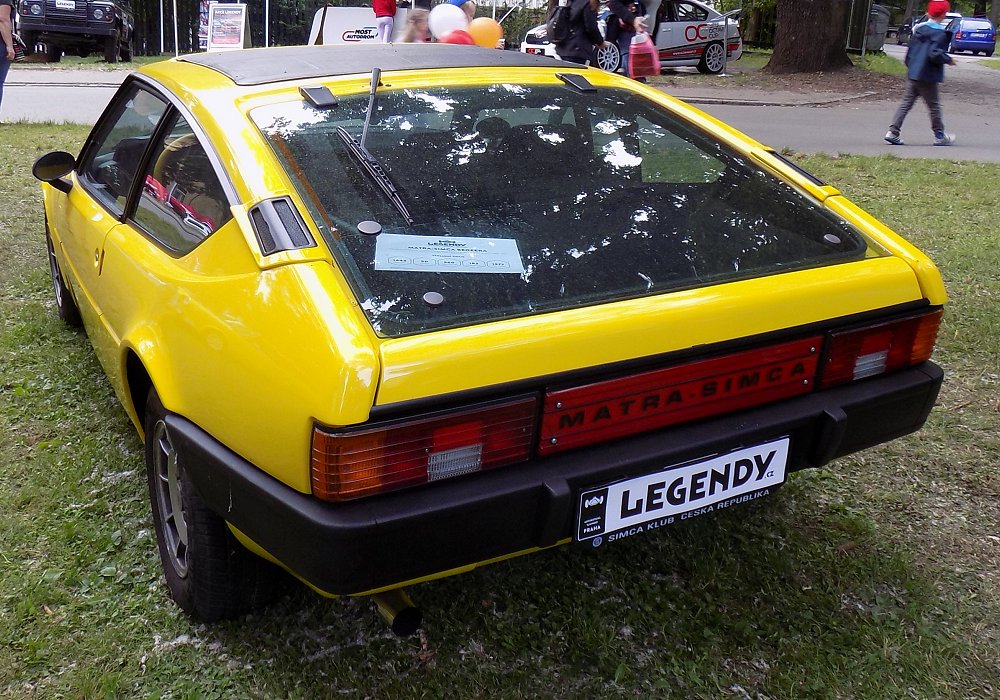Description
The Matra-Simca Bagheera S was the sportiest and most performance-oriented version of the Bagheera range, introduced in 1976 as an evolution of Matra’s already innovative mid-engined 2+2+1 sports coupé. While it retained the core attributes that made the Bagheera distinctive — lightweight construction, mid-engine balance, fibreglass body panels and the unique three-across seating layout — the S model sharpened the formula with more power, revised gearing, sportier styling elements and improved road manners. It became the enthusiast’s choice within the Bagheera family and helped reinforce the model’s reputation as one of the most engaging affordable sports cars of its era.
The Bagheera S was based on the second-series Bagheera platform. This meant a pressed-steel monocoque chassis clothed in lightweight polyester-fibreglass panels bonded to the frame. The advantage of this method was that Matra could construct large, aerodynamic shapes without heavy tooling, all while keeping weight low. Beneath the distinctive wedge silhouette lay the same transverse mid-engine layout that defined the entire model line, with the engine mounted just behind the trio of front seats.
Where the Bagheera S made its biggest leap was in power. Instead of the earlier 1.3-litre Simca unit, the S adopted the more potent 1,442 cc overhead-valve Simca engine. In S tune — which included a sports camshaft, twin Weber 36 DCNF carburettors and revised ignition — the engine produced approximately 90 horsepower, a meaningful jump over the standard Bagheera’s output. In a car weighing around 900 kg, this resulted in noticeably livelier acceleration and a top speed approaching 185 km/h (115 mph). The stronger, more flexible torque band also made the car feel more responsive in everyday driving.
The engine paired with a close-ratio gearbox that better matched the S’s sporting intentions. Shorter intermediate gears improved in-gear acceleration, while the final drive allowed the car to reach its higher top speed without compromising tractability. The combination made the S the quickest of the Bagheera range until the arrival of later special editions.
Suspension geometry remained fully independent, with coil springs and wishbones at the front and coil-spring trailing arms at the rear. Matra tuned the S for a more controlled, sharper feel, increasing roll stiffness and revising damper rates. The result was improved turn-in, reduced body movement and a generally more engaging driving experience without sacrificing the everyday usability that characterised the model. Steering remained light, accurate and full of feedback, and braking was handled by front discs and rear drums — adequate for the car’s weight and performance.
Visually, the Bagheera S distinguished itself with subtle but purposeful exterior cues. Many cars featured black-painted lower body sections, contrasting with bright colours such as yellow, orange or red that became popular on the S. Extra trim details, unique wheel designs and S badging further identified the model. The overall profile, with its long sloping nose, pop-up headlights and crisply cut tail, remained unmistakably Bagheera — an aerodynamic shape that combined French ingenuity with clean 1970s wedge design.
Inside, the car retained the Bagheera’s hallmark three-across seating arrangement, with the driver slightly forward and offset to create more lateral room. The cabin in S specification was typically trimmed with sportier fabrics and colours and featured a full instrument cluster angled toward the driver. Although still compact, the interior was practical and modern for its time, with good visibility and a reasonable boot at the rear made possible by the compact transverse drivetrain.
On the road, the Bagheera S delivered exactly the character Matra intended: agile, eager and rewarding to drive. The mid-engine balance gave it neutral, predictable handling, with the S’s firmer settings making the chassis even more enjoyable on twisting back roads. It remained comfortable enough for long-distance touring, but spirited driving brought out the best in its lightweight construction and energetic engine. Contemporary testers often described the S as one of the best-handling affordable sports cars available in Europe.
The Bagheera S remained in production until 1980 and contributed significantly to the Bagheera’s overall success. With roughly 48,000 Bagheeras produced across all variants, the S accounts for a notable portion of total output, though exact numbers vary by source. What is certain is that the S became the enthusiast favourite — the ideal balance of practical mid-engined GT and sporting coupé.
Today, the Matra-Simca Bagheera S is prized for its rarity, character and clever engineering. It represents the Bagheera concept at its most refined and spirited: light, balanced, imaginative and delightfully unconventional. As one of the 1970s’ most innovative small sports cars, the Bagheera S remains a testament to Matra’s distinct ability to combine practicality with genuine driving enjoyment.


